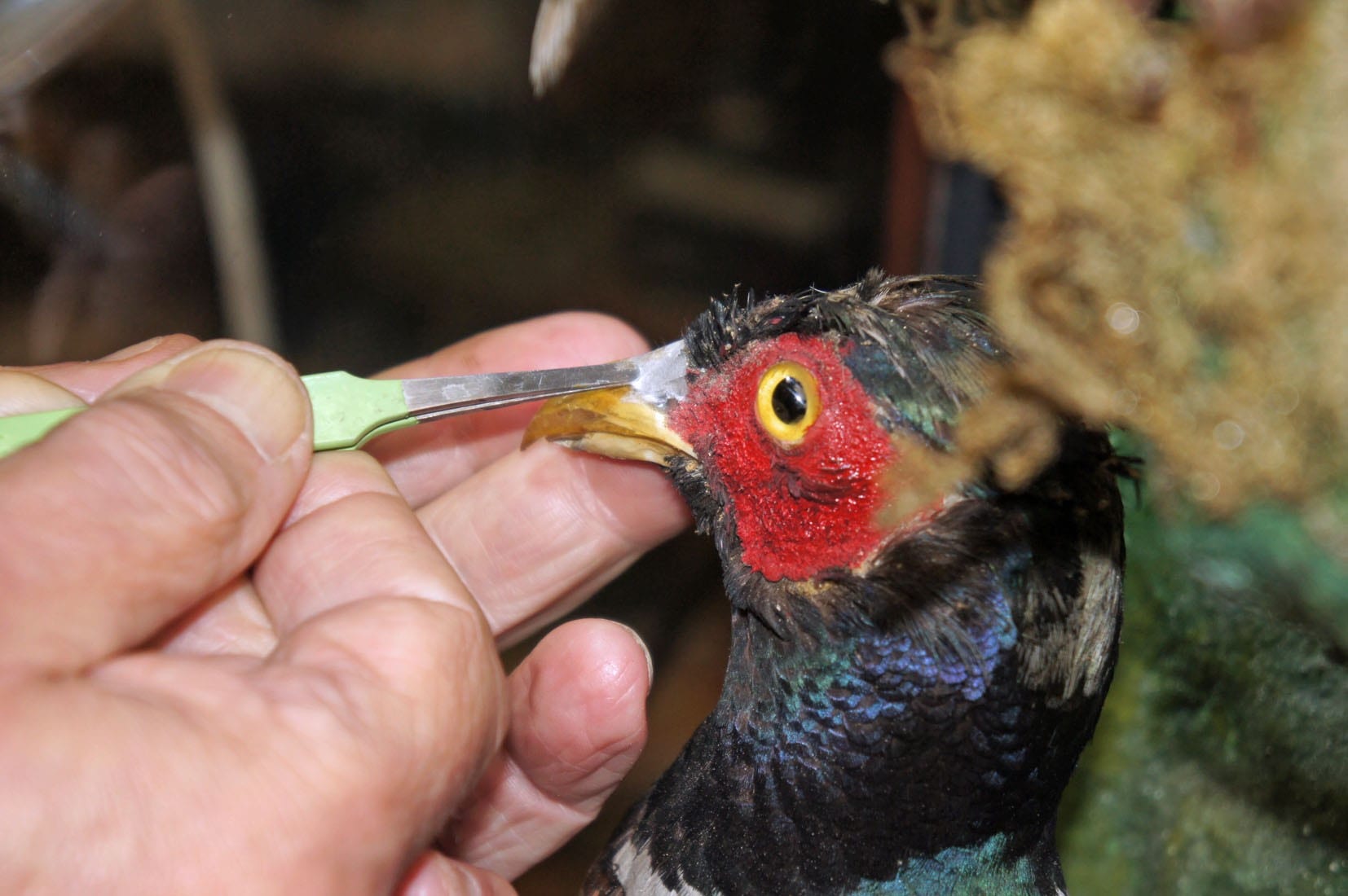Museum in the Park, Stroud
Back to Grants for Conservation ProjectsGrant Scheme
Collections Care Stimulus Fund
Award Year
2021
Grant Sum Awarded
£1,073
Icon Accredited Conservator

Details
The Museum
The Museum in the Park, Stroud houses approximately 4500 objects which tell stories of the human, geological and natural history of the Stroud District. This is around 8% of the total collections of the Cowle Museum Trust – the remainder of whose collection is held in off-site stores and cared for/made accessible by the staff of the Museum. The museum is open 6 days a week and in pre-pandemic times attracted around 60,000 visitors per annum.
Set in a historic clothiers’ mansion, the displays achieve a balance between traditional museum displays and period room settings, and the Collectors Room demonstrates this perfectly. With oak panelling on the walls, a piano, and a display of antique firearms and taxidermy it embodies the sense of a historic home, whilst museum display drawers house shells, butterflies and coin collections and wall mounted display cases show foreign archaeology and ceramic collections.
The Project
This particular project looked to improve the condition of a case of taxidermy birds, thought to have been in the collections since the 1930s. This case of 12 specimens had been identified as having suffered insect pest damage some years ago, and as such proper investigation of it was an action within the museum’s Care and Conservation Plan. Careful monitoring of the specimens led staff to believe that the pests were no longer active, but it was not known when the infestation took place, nor was it possible to see the full extent of the damage.
Conservation work of the sort needed here would normally be funded through a targeted in-house campaign – talking to visitors about the specimens, why they were important to save and encouraging them to make a small cash donation towards the work. During 2020 – 2021 visitors, and therefore donations, have been few and far between – so the Icon Collections Care Stimulus Grant came at just the right time for the birds.
Conservation Work
The museum commissioned Icon accredited conservator Simon Moore ACR to work on the birds, cleaning up the infestation, repairing the damage and generally improving the condition and appearance of the specimens. He collected the case of birds from the museum in late April 2021 – and his initial assessment was that despite the fairly severe larval depredation the birds were largely intact, though there was a fair amount of loose plumage which would need to be reattached. Further investigation however discovered loose and detached wings and tails, grazed beaks and more severe damage than had been visible before the case was opened. Simon carefully cleaned and repaired all of the specimens, producing a detailed report which will be useful to the museum in years to come. Having finished working on the specimens themselves, including treating them with Constrain pesticide, Simon reassembled their case and made sure it was well sealed so that future infestations would be much less likely and the birds were returned to the museum towards the end of May 2021.
Outcome
Since the birds have returned to the museum they have been temporarily displayed at a lower level than their previous location – allowing visitors to see them much more closely, and special interpretation of the birds and the work on them has featured in a number of the guided tours the museum is currently offering. Meanwhile, the specimens are now in such good condition staff are discussing alternative display options for them beyond simply putting them back high on the wall where they were originally situated. There is a real opportunity to make more use of this case in the way it draws together the history of collecting, taxidermy, conservation of both natural history and other museum objects, and the history of museums. It will also be a star object in stories around extinction and human impact on the natural world which the museum has recently begun to incorporate into their program. We are excited to explore the new interpretive opportunities the newly conserved birds present to us.

